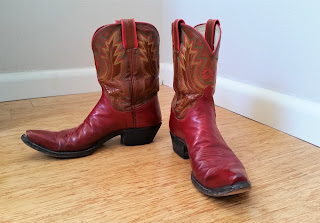Zestful Blog Post #213
There are three kinds of writers. The first kind of writer
is one who does not know the difference between hay and straw, and doesn’t care.
The second kind of writer is one who does not know the difference between hay
and straw, but when corrected, is glad, and will use the words properly
from now on. The third kind of writer knows the difference between hay and
straw. The same goes for concrete versus cement, and iron versus steel. I am
the third kind of writer, and five minutes from now you will be the third kind
of writer too. This post is about our material world.
Hay versus straw.
Hay is fodder for animals, and is made of dried plants
bundled into bales. You may have heard the terms timothy hay, clover hay, and
so on. Dried alfalfa is hay. Certain kinds of legumes are grown for hay.
Farmers grow hay crops such as these to be cut, then left to dry, then baled. So yeah, if the field is cut and dried, it’s finished,
settled. (In olden times before farm mechanization, farmers would simply scythe
down meadow grass, or any kind of undifferentiated growth, let it dry, then
stack it for animal fodder.) Modern hay bales are either square or rectangular,
and they separate into segments called flakes. A flake can be an easy way to
measure how much hay you’re giving to your animals. Also, you’ve seen hay in round
bales, you know, those huge picturesque rolls that dot the fields. Some city dads
tell their kids those are cow cocoons: The mama cow lays her egg, then builds
that large roll of hay around the egg, so that when the calf hatches, it has
something good to eat right away. It then can eat its way out and be all nice
and healthy when it comes into the world.
Straw is what is left over from the harvesting of grains:
the dried stalks of crops like wheat and oats. Straw is used as bedding
material for animals, and decorative bales of straw are sold in hardware stores
around Halloween time. That hayride you went on when you were a kid at some
farm? It was most likely straw you were sitting on, there in the wagon.
If you have ever lifted a bale of hay, and then lifted a
bale of straw, you will immediately understand the difference in food value. A
bale that weighs 60 pounds if made of hay would weigh, if it was made of straw,
maybe only 10 pounds.
So: a horse in a stable eats hay while standing on straw.
Cement versus
concrete.
Cement is a substance that sticks things together. Concrete is made of cement, aggregate, and water. Cement for use in concrete is made mostly of finely ground limestone. It's a powder. If you
wet it, it’s slick to the touch, and sticky. Aggregate, in this sense, is a mix
of stones and pebbles and perhaps sand. You mix cement with aggregate and
water, and you stir it around, and you pour it someplace, and when it hardens
you have concrete.
The sidewalks you walk upon are not cement, they are concrete.
Pilings and abutments that hold up modern bridges are made of reinforced
concrete. Even though people call them cement mixers, they are concrete mixers. Nothing is made entirely of cement.
Bonus: the concrete you walk on can also be called pavement.
Iron versus steel.
Iron is an element, chemical symbol Fe. You have heard of
ferrous metals; a ferrous metal is a metal that contains iron. Steel is an
alloy that is made from iron and other elements, such as carbon and manganese. It
is a ferrous metal.
Bonus:
This morning you may have fried your eggs in a cast iron
skillet. That skillet came out of a mold: it was cast in iron. The railing you
lean on when you watch the Mardi Gras parade from your French quarter apartment
is made of wrought iron, which is ductile and malleable, perfect for a blacksmith
to make curlicues and slender railings from.
You are now officially the third kind of writer. Stick with
me and you’ll be all right.
What do you think? To post, click below where it says, 'No
Comments,' or '2 Comments,' or whatever.
If you'd like to receive this blog automatically as an
email, look to the right, above my bio, and subscribe there. Thanks for looking
in.




